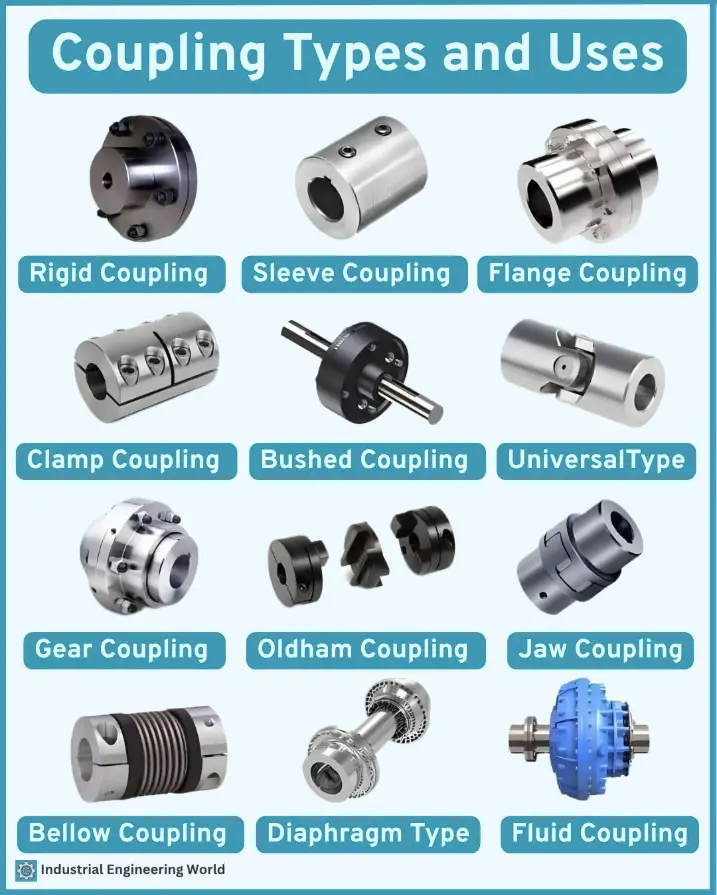Coupling types are mechanical devices used to connect two shafts together to transmit power while accommodating misalignment, reducing shock loads, and enabling disconnection for maintenance. Here are the common types of couplings and their uses:

1. Rigid Couplings
-
Use: For precise shaft alignment with no flexibility.
-
Types:
-
Sleeve Coupling: Simple, low-cost, used where shafts are perfectly aligned.
-
Flanged Coupling: Bolted connection for high-torque applications (e.g., pumps, compressors).
-
2. Flexible Couplings
-
Use: Compensates for minor misalignment (angular, parallel, axial).
-
Types:
-
Jaw Coupling: Handles minor misalignment with elastomeric insert (e.g., motors, conveyors).
-
Gear Coupling: High torque, accommodates misalignment via gear teeth (e.g., heavy machinery, turbines).
-
Grid Coupling: Damped torque transmission with a flexible grid (e.g., mining equipment).
-
Oldham Coupling: Handles parallel misalignment via a sliding disc (e.g., printers, robotics).
-
Universal Joint (U-Joint): For angular misalignment in driveshafts (e.g., automotive, marine).
-
3. Fluid Couplings
-
Use: Transmits power hydraulically, smooth start-up (e.g., crushers, conveyors).
4. Magnetic Couplings
-
Use: Contactless power transmission (e.g., pumps handling hazardous fluids).
5. Torsional Couplings
-
Use: Absorbs vibration/shock (e.g., diesel engines, compressors).
Selection Criteria:
-
Misalignment: Flexible couplings for minor deviations.
-
Torque: Gear couplings for high torque.
-
Environment: Stainless steel for corrosive conditions.
-
Maintenance: Quick-disconnect types for easy servicing.
Each coupling type serves specific needs based on alignment, torque, and operational conditions.

